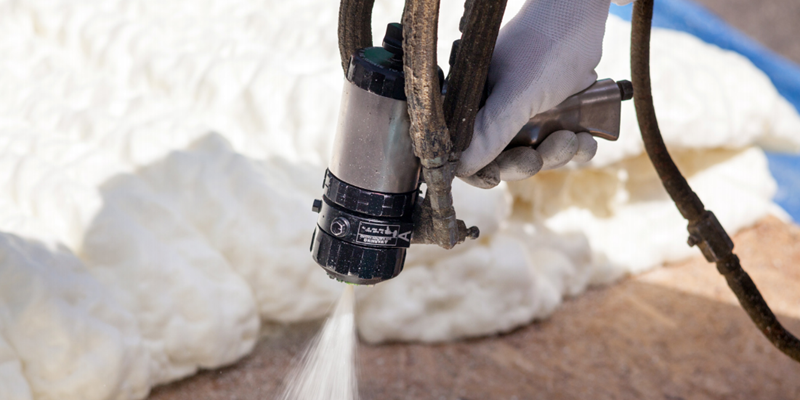Spray foam insulation material has become a technology in modern buildings, with better thermal insulation, airtight and moisture-proof properties. At the heart of this high-performance insulation system is polyurethane foam, A material formed through a chemical reaction between two main components: the “A” side (usually a polyisocyanate) and the “B” side, which is a mixture of polyols, catalysts, blowing agents, flame retardants and surfactants. Polyurethane catalysts, such as MXC-BDMA and MXC-TMA, play an important role in driving reactions, optimizing foam formation and ensuring the performance required for a variety of insulation applications.
Components of the “B” Side in Spray Polyurethane Systems
In spray polyurethane foam (SPF) systems, the “B” side includes a range of additives that dictate the performance of the final product. These additives include:
- Polyols: The primary building blocks that react with isocyanates to form the polyurethane polymer.
- Catalysts: Chemical compounds that accelerate the reaction between polyols and isocyanates, ensuring efficient foam formation and curing.
- Foaming Agents: Substances that help create the foam structure by generating gas during the reaction.
- Flame Retardants: Additives that improve the fire resistance of the foam.
- Surfactants: Compounds that stabilize the foam structure, ensuring uniform cell formation.
MXC-BDMA: Benzyl Dimethylamine Catalyst for Rigid Polyurethane Foam
MXC-BDMA (CAS 103-83-3) is a benzyl dimethylamine catalyst widely used in the polyurethane industry, especially in hard foam applications. It is particularly effective in the production of rigid polyurethane foams, which have excellent thermal insulation properties and structural integrity and are often used to spray foam insulation.
The main benefits of MXC-BDMA in spray foam systems include:
Enhanced early fluidity: MXC-BDMA ensures that the polyurethane mixture maintains good fluidity during the early stages of the foaming process, allowing it to flow easily and fill gaps or irregular Spaces.
Uniform cell structure: The catalyst promotes the formation of small, uniform bubbles within the foam, thereby improving thermal insulation and ensuring mechanical stability. The uniform cell structure also helps the foam maintain continuous air tightness, which improves the energy efficiency of the insulation.
Strong adhesion to substrates: MXC-BDMA helps to improve the adhesion between the foam and various substrates, such as wood, metal and concrete. This ensures that the spray foam adheres firmly to the applied surface, even in challenging environments.
MXC-TMA: Catalyst for Polyisocyanurate Foam Systems
Another important catalyst in sprayed polyurethane systems is MXC-TMA (CAS 75-50-3), a trimethylamine-based catalyst that is particularly suitable for polyisocyanurate (PIR) foam systems. PIR foam is similar to polyurethane foam, but the formula contains a higher proportion of isocyanates. This modification gives the foam greater thermal stability and fire resistance, making it a wide choice for insulation applications where fire resistance is critical.
MXC-TMA contributes to PIR systems in a number of key ways:
Compatibility with PIR systems: MXC-TMA is optimized for polyisocyanurate foam formulations to effectively drive the reaction and ensure that the foam cures evenly and thoroughly.
Improved fire resistance: PIR foam has superior flame resistance compared to standard polyurethane foam. The use of MXC-TMA in PIR formulations enhances this property, making it a choice for applications in flammable or high-temperature environments.
Stable foam formation: Similar to MXC-BDMA, MXC-TMA ensures that the foam forms a uniform cellular structure, which is important for maintaining the insulating properties of the material over the long term.
PIR foams containing MXC-TMA are commonly used in commercial roofing, wall insulation, and other high-performance insulation applications that require insulation and fire protection.
The Importance of Catalysts in Spray Foam Insulation
In conclusion, polyurethane catalysts such as MXC-BDMA and MXC-TMA are key components in spray foam insulation systems. They help control reactivity, improve foam flow and uniformity, and ensure strong adhesion and stability.
Post time: Dec-11-2024

